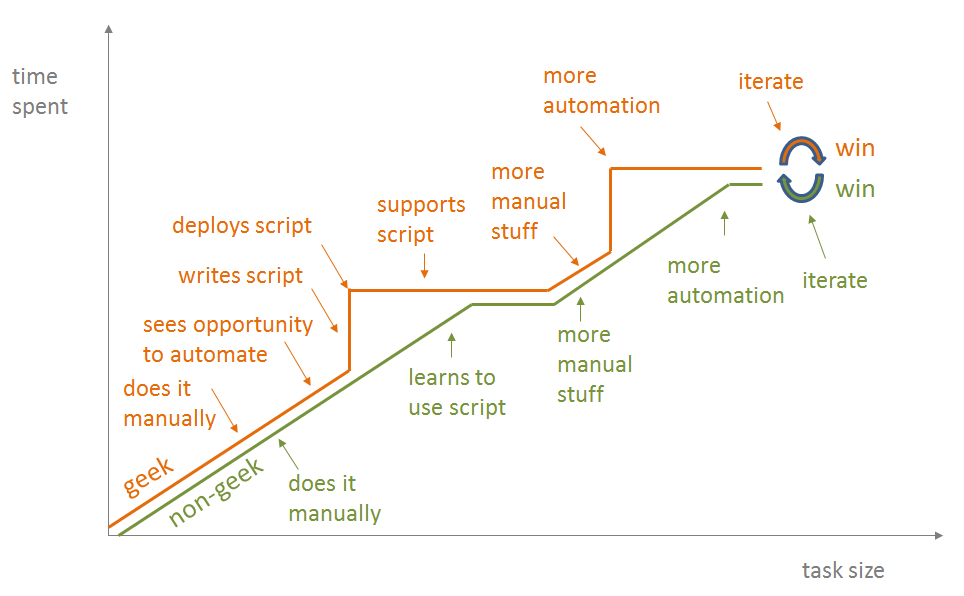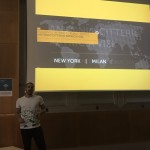Dynamo Meetup – Computational Design in Rome
Tweet riguardo #DynamoMeetup On Friday afternoon we were invited to participate as speakers in an event I wouldn’t hesitate to describe as historical: the first computational design meetup in Italy, held in Rome at the astonishing location of a quite surprising co-working space. The first italian #Dynamo meetup will begin in less than 1 hour […]
On Friday afternoon we were invited to participate as speakers in an event I wouldn’t hesitate to describe as historical: the first computational design meetup in Italy, held in Rome at the astonishing location of a quite surprising co-working space.
The first italian #Dynamo meetup will begin in less than 1 hour in a very cool location.@CrShelidon @vincpanasiti @albertotono3 @ric_master pic.twitter.com/6jUcOVvhXC
— Claudio Vittori A. (@C_VittoriAntisa) 21 luglio 2017
The event was due to the efforts of an extraordinary professional and friend of ours, Alberto Tono, who was able to gather some amazing contributions in a free event to what other gatherings couldn’t hold a candle to. Riccardo Pagani wrote about the event here. The gathering was organized through meetup and you can find more information here.
Well, the agenda is rather dense!#DynamoMeetup pic.twitter.com/gFj6JHS6cE — Chiara Rizzarda (@CrShelidon) 21 luglio 2017
Here’s the programme as it took place:
- Introduction by Riccardo Pagani, BIMon;
- a showcase of projects with a little magic on the side, by Alberto Tono;
- Alessandro Sartini and Marco Micheli, two amazing students who presented a rather impressive project;
- me and Claudio Vittori Antisari with the ten best Dynamo scripts ever written (by us);
- Manuel André Bottiglieri and Viola Cambiè on behalf of Lombardini 22, who presented their R&D jewels;
- Thomas Mahon (Bimorph) who close the evening with style.

The meeting had a distinctive Italian taste, as many people were local with a couple of exotic sparks coming from USA, UK, Turkey, Bulgaria and Denmark. It was heartwarming to see so many people and once again it’s the tangible demonstration that we have everything it takes to hold these kind of meetings in Italy as well. Sharing is a virtue and when you share a workflow you are not giving away something: you are just placing a bet in a win-win situation where everybody will go home a little richer. It’s the spirit that moves the BIM User Group and we were more than glad to put the same efforts and spirit in this event.
So, was this a gathering of nerds? Well, no.
Computationa Design is not just for Nerds. It’s a crucial topic for the whole AEC industry @ric_master #Dynamo #DynamoMeetup @CrShelidon pic.twitter.com/9i31ZQqkYP
— Claudio Vittori A. (@C_VittoriAntisa) 21 luglio 2017
With a quote from John Maeda, the essence of the discussion is that «if you want to survive in Design, you better learn to code». To Code or not to Code is not a question anymore, as Riccardo was stressing with a sparkling slide in his introduction: coding is a necessity, to move away from designers what is dull, dangerous and dirty, just as it happened with all other automated activities.
Some of these activities were presented by Alberto Tono in his speech: Renaming Views and Sheets, placing serial numbers on items such as the seats of a stadium, place families based on a Cad reference, place legends on sheet such as they are always aligned in the same position and your designers won’t suffer from a nervous breakdown. We’re sure all of this sounds familiar if you work in computational workflow optimization.


Alessandro Sartini and Marco Micheli were the main characters in a presentation of the work of a larger group of students, and they took our breath away. Do you remember when we went down in Rome to hold a lesson in Valle Giulia, last January? Well, the BIM group has been working on, with a workshop that is leading them to participate at the International BIM Competition in Singapore. The guys were shortlisted and the presentation of their work is supposed to take place on the 28th this month. On August 4th results will be released. Cross all the fingers you have, because these guys really rock.
Our small contribution to the gathering was a set of ten scripts for everyday use, currently running around the office. Our biggest contribution, on the other side, was the physical presence of the authors of those scripts, our BIM coordinators at Antonio Citterio Patricia Viel, for people to harass. They were Cristiano Piagnerelli, Vincenzo Panasiti, Stefano Stevané and Giuseppe Garofalo, and we thank them again for their presence. The main applications showed were in three main areas: geometry modelling, data management and model management, with a spark of other applications.  As the core business of the studio spans from Architecture and Interiors through heritage and the occasional boat, our scripts were varied in size and subject. Some of them aimed to the optimization of skyscrapers paneling.
As the core business of the studio spans from Architecture and Interiors through heritage and the occasional boat, our scripts were varied in size and subject. Some of them aimed to the optimization of skyscrapers paneling.

Others were simply created to model a not so simple to create staircase; some of them aimed at smoothing the workflow between data extraction and data visualization (you might have seen a class in Vegas about that). Last but not least, a good portion of them were tools of model management, created by our coordinators to be more efficient. As you know, a good BIM coordinator is a servant of the light, a guardian of peace and justice within the models. Our scripts to automate the creation of the project showroom, for instance, make us very proud. We too have a script that creates and renames sheets. We have tools to make people’s life easier and happier.

 But sometimes people just don’t want to be helped and quick is the path that leads to the Dark Side. Therefore we were equally proud to present few scripts created in order to keep the galaxy in good order and… well, just good order, maybe.
But sometimes people just don’t want to be helped and quick is the path that leads to the Dark Side. Therefore we were equally proud to present few scripts created in order to keep the galaxy in good order and… well, just good order, maybe.
The best of this selection was, without any doubt, “Severo ma giusto” (Harsh and yet upright). The script double checks everything in the model and deletes what’s not in accordance with Company Standards. No. It’s not mine.
As a closure, our view about computational design is well summarized in a variation of the traditional graph about geek and non-geek approach to repetitive tasks. The traditional graph presents a wins-loses situation. In his article “Another way to think about geeks and repetitive tasks”, Jon Udell presented a different way of looking at this and we totally agree. It’s not a matter of winning and loosing. When you are working in an ecosystem (and we all are, no matter if you are a freelancer or the BIM coordinator of an architectural firm), if somebody loses we all lose. The only scenario for everyone to win is through teaching, coaching and collaboration.

After our show, we had the Research and Development department of Lombardini 22, aka Manuel André Bottiglieri and Viola Cambiè, who presented their progresses and explorations in three main areas:
– parametric design;
– data analysis;
– cross-platform services.
Instead of being focused just on Dynamo, their presentation included a set of tools, from Grasshopper for geometry to the use of Forge for data analysis. Highly interesting.
Not only @DynamoBIM. @MABottiglieri talking about @AutodeskForge here at the #DynamoMeetup. pic.twitter.com/cgPOjSJY8o — Chiara Rizzarda (@CrShelidon) 21 luglio 2017
Last but not least, Thomas Mahon of BIMorph was with us through Skype and fought against a bad connection to show us his wonders.
.@Thomas__Mahon talking about the @bimorphBIM nodes at the #DynamoMeetup here in Rome. pic.twitter.com/Y0GdndOZTo
— Chiara Rizzarda (@CrShelidon) 21 luglio 2017
So… what’s next?
So we are going to do after the first Italian Dynamo Meetup? Will we rest? No, never. We can’t wait to see the second one happening. And the third one after that.
A meetup is a place where it’s possible to share knowledge in an open and horizontal way. As the BIM User Group experience is teaching us, the experience can be extremely fruitful. We need more of this type of events to take place in Italy.
Designing with digital tool is more than a profession: it’s a culture; every culture needs spaces and a community in order to grow. We need all the computational designer in italy to step up and raise their voice. If we stand together we will become stronger, wiser, more experienced.
The golden age of Computational Design has yet to come, actually we are still struggling near the stone age, but the trail is clear.
While the industry is broadening the usage of informative models as the main tools to design, and build buildings, algorithmic design will grow in unseen ways.
As Italians we won’t stand in a corner, looking at the rest of the world: we will contribute to this global movement.
See you soon.
— Chiara C. Rizzarda
— Claudio Vittori Antisari






I really like it when people come together and share views. Great website, keep it up!